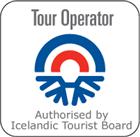
| Convert ISK |
|
|
|
|
|
|
|
|
| Reference only |

South
In the South there are many historically important places. From the Icelandic Sagas we know the so-called Oddaverjar, who are named after Oddi chieftain farm in the Rangarvellir area but in ancient times Oddi was a major seat of culture and power. There stood the School of Oddi, which Saemundur the Learned Sigfusson (1056-1133) made famous and the chief dwelling-place of his grandson, Jon Loftsson (1124-1197), the most famous chieftain of the country in his time. Here Snorri Sturluson (1179-1241) grew up. He later wrote the Heimskringla and Snorri’s Edda.
Then we have the setting of Njal’s Saga, and there the ancient manor-houses of Hlidarendi and Bergthorshvoll come into play. Thingvellir where the Althing (Parliament) was originally held is considered by the people of Iceland a holy place. At Skalholt there was a bishopric for centuries where several important churches have been built.

At Stong in Thjorsardalur valley ruins of a Saga Age farm which were covered with pumice in the Hekla eruption of 1104 are visible. In 1974 the farm of Stong was reconstructed as the Saga Age Farm which stands in a beautiful hollow under Samsstadamuli in Thjorsardalur valley.
In the South there are most of the largest hydro-electrical power plants in the country. They are usually open to visitors during the summer.
In the Westman Islands, the largest fishing station in the South, the ruins caused by the Heimaey eruption in 1973 are still visible in the town. The landscape is varied and very beautiful. There a Norwegian-style stave church has been erected. In the middle of the seventeenth century the islands were the scene of the so-called Turkishplundering when the “Moors” attacked the coastline, abducted people and brought with them into slavery in Algeria.
The only farmers’ village in the country is Thykkvibaer where there is a lot of potato farming and industry. In the spring and autumn it is the resting-place of migratory birds on their way to and from the country and it is not uncommon to see hundreds of swans there at the same time.
